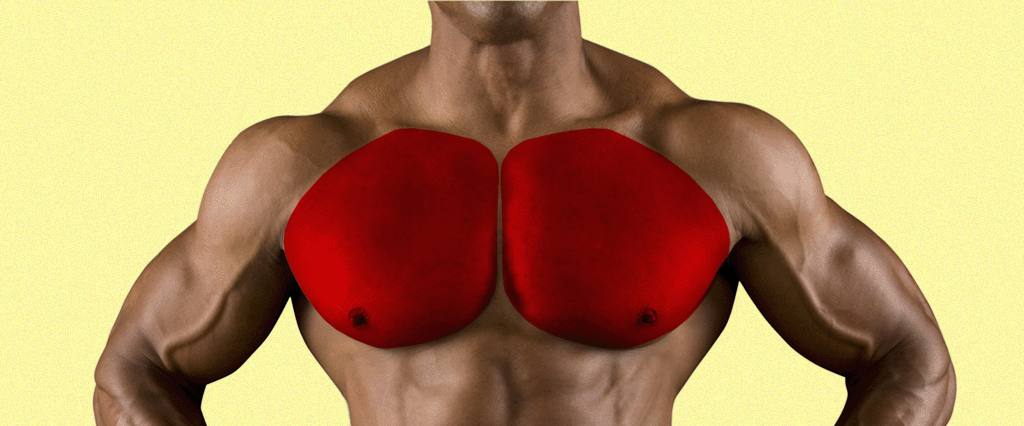I was very slow to pick up on the fact that genetic differences play a massive and seemingly unjust role in determining the way people’s bodies respond to resistance training. In particular, I used to think it was silly to specifically train the upper chest. “What’s the point of the incline bench?” I asked Julian, one of the bodybuilding trainers at the Bally Total Fitness in suburban Detroit where I was a personal trainer. “I can bench so much heavier on the regular bench. I don’t see the point.”
“That’s because a lot of people have a hard time developing the muscles in their upper chests,” Julian explained, before poking me in the chest in the unfilled out area right below my clavicle. “Like you,” he said, sweeping his index finger across the uppermost part of my chest that had been left exposed by my tank top. “Incline bench will probably help you to fill this in a bit better.”
It was a very up-close-and-personal lesson in how not all exercises train everyone’s bodies with the same level of thoroughness. In my case, training with the back support pad of the bench at an incline was merely one of the modifications I needed to make if I wanted a chest that matched those who were naturally blessed in that area. When it came to my long pec muscles, parallel training with push-ups and standard bench pressing just wasn’t getting the job done.
Well, I don’t get it either! What does the incline bench press accomplish that other chest exercises can’t?
Let’s back up for a moment and examine your chest muscles. When you study the diagram below, you’ll see how a portion of your upper chest ties into your clavicle rather than at your sternum. If you follow the directions that the muscle fibers flow in, and monitor the way in which they respond to the tension and flex as they press weight upward, you can see that the overwhelming share of the tension during a flat bench press is experienced by the portion of the pectorals that connect to the sternum. Therefore, changing the angle of the weight being pressed is essential if you’re going to shift the focus to the portion of the chest that ties in at the clavicle, which encompasses the majority of the upper pectorals.
That makes sense. So is there anything special that I need to know about targeting the upper chest muscles with the incline bench?
There certainly is: As you track the pattern of the upper pectorals, you’ll notice that they not only move in a low-to-high pattern, but they also move inward. As such, the most optimal way to isolate them involves a tradeoff similar to when you target the sternal portion of your pecs. Using a barbell provides you with the best opportunity to overload your chest with heavy weight to elicit rapid growth, but using dumbbells enables you to move your hands inward as you press the weight, resulting in an optimal contraction in your chest muscles even if the weight being lifted is lower.
Here’s the point: If you wish to be thorough with your incline presses, you’ll train your upper chest using both the incline barbell bench press and the incline dumbbell bench press. However, if you can only choose one of the two, the best way to inflate that low-lying clavicle area is to use the dumbbell variation of the exercise.
While we’re on the topic, are there any other muscles the incline bench press works?
There are! The dumbbell bench press also works the triceps and anterior deltoids to some extent, but there are far more effective exercises for targeting both muscle groups. When you get right down to the essence of this exercise, it’s primarily something you should use to place additional emphasis on your upper chest if it doesn’t seem to respond to anything else. As they say, it’s never a bad thing to work every angle.

